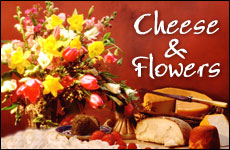 Identifying as a Jew
Identifying as a Jew


4 min read
Why do we eat dairy foods and decorate the synagogue on Shavuot?
Shavuot is singular in the calendar of Jewish holidays. It, unlike all of the other Jewish holidays, has no special mitzvot attached to it, nor does it possess a holiday presence. Perhaps this is one of the causes why Shavuot has become almost a forgotten holiday for many in the Jewish world.
Though the holiday of Shavuot has great historical significance, being the anniversary of the revelation at Sinai and of the gift of Torah to Israel, it nevertheless was left bereft of special biblical ritual to celebrate the event. In fact, in the Bible we find the holiday of Shavuot referred to as the "Holiday of Bikkurim" -- the bringing of the first fruits of the year's crop to the Temple in Jerusalem.
After the destruction of the Temple and the entry into our long exile, the Jewish people refused to leave the holiday of Shavuot unadorned of distinctiveness. The holiday of Shavuot was therefore invested with customs and rituals that have preserved the beauty and ness of the holiday to our day.
Dairy Foods
One of those customs is the eating of dairy food at the holiday meal. This is an exception to the talmudic rule that "holiday joy requires meat and wine." Shavuot cheesecake and cheese blintzes have become beloved and fattening staples in Jewish homes for centuries.
The origins of this custom are grounded in the commemoration of the receiving of the Torah on this day. The Torah itself is compared to milk -- "Honey and milk under your tongue" -- and thus dairy products are symbolic of that great day of Sinai. The Jewish people after receiving the Torah could not eat meat products immediately, since the meat that they had was not prepared in accordance with the newly-given laws of the ritual of animal slaughter and the dietary laws. Hence they ate only dairy products on the day of revelation, the holiday of Shavuot.
A further source of the custom of dairy foods on Shavuot lay in the description in the Torah, given to Israel on Shavuot, of the Land of Israel as being "a land that flows with milk and honey." Thus, the dairy foods came not only to remind the Jewish people of the Torah given at Sinai, but also of their beloved homeland, the Land of Israel.
Synagogue Decoration
Another Shavuot custom arose, that of decorating one's home, the synagogue and even the Torah scroll itself with greens and flowers in honor of the holiday. This custom of flowers and greens was based upon a statement in Midrash that the foot of Mount Sinai (where the Jews stood in awe, awaiting the granting of the Torah) was carpeted with greens and sweet smelling flowers.
Even in Eastern Europe, where Jews in the main lived in squalor and poverty, flowers in the synagogue on Shavuot was a widely practiced societal custom. However, the Gaon of Vilna, Rabbi Eliyahu Kramer, opposed the custom vigorously. His contention was that a custom, even if its origin was Jewish and based on Jewish tradition, had been adopted by the non-Jewish world as a custom in their houses of worship, then Jews should forego their further observance of that custom. Since flowers and greens were widely used in church services and in non-Jewish cemeteries, the custom of flowers and greens in the synagogue on Shavuot should be abandoned.
The Gaon's opinion was widely followed in Lithuanian Jewry but was ignored almost everywhere else in the Jewish world. Thus, the decorating of the synagogue and the home with flowers on Shavuot remains a strong custom among Jews until today.
In fact, the supplying of the flowers and green decorations for the synagogue was deemed an honor that people vied for. One therefore paid not only for the flowers and greens themselves, but also paid the synagogue for the honor of paying for those flowers and greens. Honor is an addictive elixir!
So enjoy the flowers and the cheesecake and revel in the fact that the Lord has given us the Torah, and through it, the task of creating a better world for us and all mankind.
